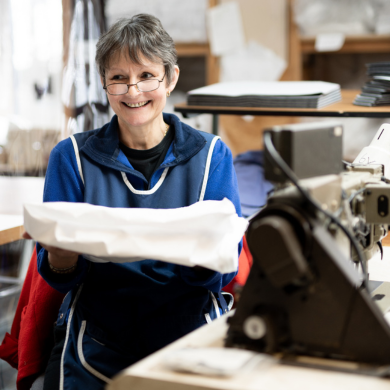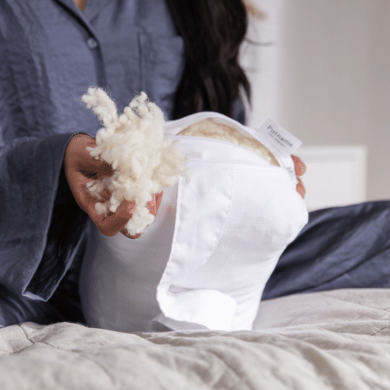
Sleep Like a Victorian: What the Past Can Teach Us About Rest
The Victorian era marks a meaningful chapter in the history of sleep, defined by routine, simplicity, and a respect for nature’s cues. If you’ve ever wondered how people used to sleep in the 1800s, there’s a lot to learn, especially in contrast to our overstimulated, tech-driven nights. Exploring Victorian sleep habits like segmented sleep and the creation of a natural sleep environment opens a window into rest that’s restorative, not restless.
This blog post unpacks the classic 1800s sleep routine, covering segmented sleep (or ‘first and second sleep’), and the use of natural materials, as well as environmental cues that defined their nighttime ritual.
Along the way, we’ll show how following traditional sleep routines that work today can help you recover real rest.
"For a long time, humanity divided its nights into two stages; it is only with the industrial revolution, and the need to gain working time, that the norm is imposed of a continuous sleep." Benoît Peuch, "De l’éveil à l’insomnie"
How Did Victorians Sleep? Lessons from the 1800s
Victorian sleep was defined by segmented sleep, the pattern of enjoying two distinct periods of rest, separated by a quiet interval.
But what is first and second sleep?
Historian Roger Ekirch explains, “From roughly 1500 to 1850, people in Western Europe commonly experienced two major intervals of sleep bridged by an hour or more of quiet wakefulness”, activities during this interval could include reflection, prayer, reading, or conversation.
Modern readers curious about how Victorians slept may be surprised to find that, according to Ekirch’s work, this biphasic pattern “was once as common as eating three meals a day.” When individuals are removed from artificial light, he notes, their sleep often reverts to this pattern, hinting that history can improve modern sleep if we let it.
It was perhaps the Victorians who first realised the importance of sleep, magnified by the onset of electricity and the Industrial Revolution.
“Sleeplessness is one of the torments of our age and generation.” William Broadbent, neurologist, 1900.
See also - Screens, Sleep and the Mind: How to Unplug the Right Way Before Bed
The Victorian Natural Sleep Environment
A key feature of Victorian sleep habits was an emphasis on creating a natural sleep environment that promoted comfort and calm, long before synthetic bedding or glowing screens complicated our nights.
Natural Materials for Bedding
Victorian beds favoured wool blankets and feather pillows, appreciated for warmth and breathability. Charlotte Brontë, writing in the 19th century, understood the connection between mind and rest: “A ruffled mind makes a restless pillow”. The materials mattered because they supported the body and soothed the senses.
Modern twist: Today, products like Putnams’ wool duvets and breathable pillows honour this approach, providing the airflow and gentle support valued by traditional sleepers. Prioritising posture and proper elevation continues a tradition of rest grounded in real comfort.
Candlelit Evenings for Rest
Candlelight was more than ambience, it was a cue to the body that it was time to wind down. Blue light wasn’t a concern; as William Blake famously wrote, “Think in the morning. Act in the noon. Eat in the evening. Sleep in the night”. This gentle routine prepared the body for rest, starkly different from today’s device-filled, backlit evenings.
Practical tip: Replace harsh lights with warm bulbs or candles to create a tranquil pre-sleep environment, helping your body naturally prepare for sleep, just as the Victorians did.
Cool, Peaceful Spaces
Victorians embraced cooler, well-ventilated bedrooms that prioritised sleep quality over luxury. This is still prevalent in the many examples of Victorian architecture that exist today, where the ceilings are high and the bedrooms spacious. Modern science echoes their approach: cool, quiet environments promote deeper sleep.
Supporting the body with good posture is another timeless value. Solutions like Putnams’ ewedges and supportive pillows offer comfort for today’s sleepers seeking pain-free rest.
What We’ve Lost, and What We Can Regain in the Age of Sleep Tech
Contemporary gadgets and glowing screens often promise better rest, but can lead to overstimulated routines and less fulfilling sleep. As Aldous Huxley noted, “That we are not much sicker and much madder than we are is due exclusively to that most blessed and blessing of all natural graces, sleep”.
The Victorians valued sleep as necessary nourishment, not another area for self-optimisation.
William Shakespeare referred to sleep as 'nature's soft nurse.'
Returning to traditional sleep routines that work today, like natural bedding, a calm evening routine, and prioritising rest, helps reclaim true rejuvenation. The past encourages us to treat sleep as a gentle necessity, worthy of space and respect. Perhaps the biggest lesson is to listen to our bodies instead of trying to make them correlate with some infernal algorithm generated by AI.
See also - Mastering the Art of a Restful Night's Sleep: How to Sleep Better in 8 Easy Steps
How to Recreate the Calm of the Past With Modern Comforts
Historical sleep lessons can shape a healthier, simpler approach to rest:
1. Rediscover Rhythm: Try Segmented Sleep
If you naturally wake in the night, take a page from Victorian tradition. Use this time for quiet reflection without anxiety. As Roger Ekirch observes, “This pattern of ‘first sleep’ and ‘second sleep’ may be more reflective of human biology than modern, consolidated sleep schedules”.
2. Choose Natural Materials
Bedding that breathes is essential. Modern options like Putnams’ duvets and pillows follow the Victorian logic: support, warmth, and airflow that foster restful nights.
3. Craft a Gentle Evening Ritual
As you wind down, let William Blake’s advice guide you: “Sleep in the night”. Dim the lights, set aside screens, and calm your mind with quiet rituals.
4. Support Your Body’s Alignment
Align your body comfortably with posture-supporting pillows and elevation wedges, solutions rooted in Victorian practicality, refined for today.
Final Thoughts as the Sandman Approaches
The history of sleep shows us that Victorian sleep habits rested on routines, natural materials, rhythmic rest, and peaceful environments that supported body and mind.
As Brontë reminded us, a peaceful mind leads to peaceful sleep. By integrating these insights and blending them with modern products designed for support and comfort, we can rediscover the art of restful, natural sleep, no time machine required other than perhaps HG Wells'.
















Leave a comment